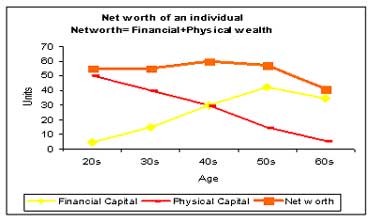|
|
| Help | |
| You are here: Rediff Home » India » Business » Columnists » Guest Column » Keya Shukla and Nupur Hetamsaria |
|
| ||||||||||||||||||||||||||||||||||||||||||||
|
| ||||||||||||||||||||||||||||||||||||||||||||
The importance of human capital can no longer be ignored. India is slated to be the hub of Knowledge Process Outsourcing in the coming decade. Already, many of the multi-national giants have shifted their R&D operations to India due to the availability of the vast pool of professionals in the country.
Human capital or intellectual capital has long been recognised as an important asset by knowledge intensive industries like bio-technology and information technology. However, its valuation has grabbed most of the attention of the academicians, researchers and practitioners. But, what about the risks faced by the companies due to the intangible nature of this asset?
It is said that a company is as good as its employees. Once a company recognises human capital as an asset, the identification, evaluation and management of the risks associated with this asset becomes pertinent for the company. There is a deep correlation between the risks faced by employees and the risk faced by the company, especially in knowledge intensive industries.
 The greater the risk faced by the employee greater is the risk to the company. If an employee has problems in his personal life then he will not be able to deliver his true potential, which will be detrimental for the survival of the company. We can break these correlated risks into three categories based on the number of parties exposed to risk.
The greater the risk faced by the employee greater is the risk to the company. If an employee has problems in his personal life then he will not be able to deliver his true potential, which will be detrimental for the survival of the company. We can break these correlated risks into three categories based on the number of parties exposed to risk.
- Individual risk
- Group risk
- Company risk
Individual risks: these are the risk that an individual faces and these have no relevance for the company. For example: the risk of automation in the company, which might reduce the work force. This will be risk for the employee only and not for the company, as the company will be benefited from automation that will result in cost savings.
Group risk: This is the risk that a group of individuals face. These risks are much correlated i.e. the effect of risk exposure on one individual affects the risk exposure of the other people working with him. For example change in the location of company may hinder a group of employees.
Company risk: These risks are highly correlated with the above risks. Any dispute among the employees will directly hinder the operations of the company. Hence, while evaluating this risk one needs to cover the above risks first. The company must dissect the various factors, which have an effect on each of the individuals or a group of individuals.
A few such risks are:
Lack of continuing education: An outdated degree, without training to keep the workforce up to date with the latest breakthroughs in the industry, will result in insecurity amongst the individual employees. This will result in loss of productivity. To minimise this risk, it is in the benefit of the company to facilitate ongoing continuing education and training for the employees.
Health related risks: Employees can give more than their 100 per cent to the company only if they are physically and mentally healthy to do so. Mere intention will not be enough. Mental bell being of an employee is also dependent on the well being of the family of the employee. Healthcare benefits and plans for the employee and her family are key to mitigate these risks to a large extent.
Cultural and behavioral risks: Boundaries have literally disappeared today. For an individual who is employable and wishes to be employed, globe is the playing field. In such circumstances, people from various backgrounds, ethnicity, and countries, often have to work together as a team towards the common goal of the company.
This can be challenging, to say the least. Personal differences can result in loss of time, productivity and profits. Providing enough platforms for all the employees to get to know each other and understand each other is important and the task lies with the management of the company.
There can be many other risks associated with human capital. Detailed above, are just a few important ones. Once the company takes care of these risks it is left with little exposure to unknown risks. Now the company can map the factors, which are essential to maintain the human capital risk at the desired level and it can find out the net worth of its entire workforce.
Net worth: As the age of an individual increases his financial strength increases while his physical strength decreases. Although the physical wealth of a person can't be quantified, we can take some metrics to represent it over a period of time. We find that the net worth of an individual increases to a certain point in life and then again decreases (See figure 1).
The company needs to draw out the strategy to continuously enhance the net worth of its human capital asset in order to survive in these times when knowledge and people are the key to the success of any venture.
Keya Shukla is Management Student, ICFAI Business School, Hyderabad; and Nupur Hetamsaria is Member, ACCA; Faculty, ICFAI Business School, Hyderabad
Do you want to discuss stock tips? Do you know a hot one? Join the Stock Market Investments Discussion Group
More Guest Columns
|
|
| © 2008 Rediff.com India Limited. All Rights Reserved. Disclaimer | Feedback |